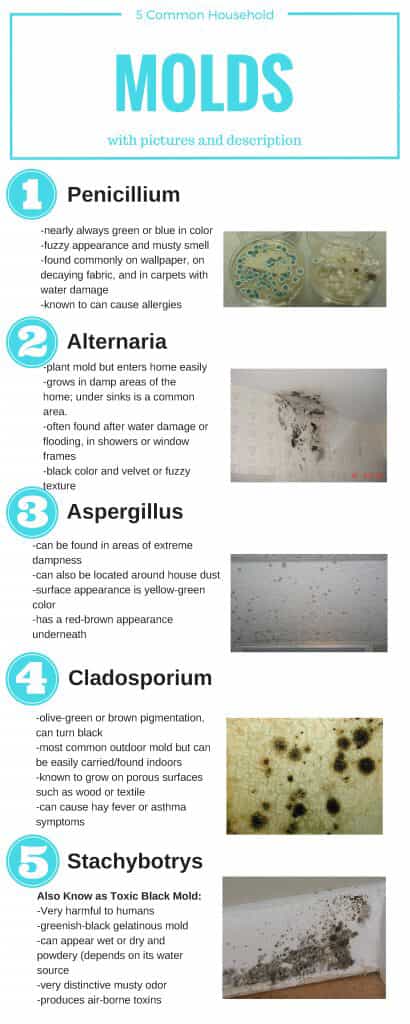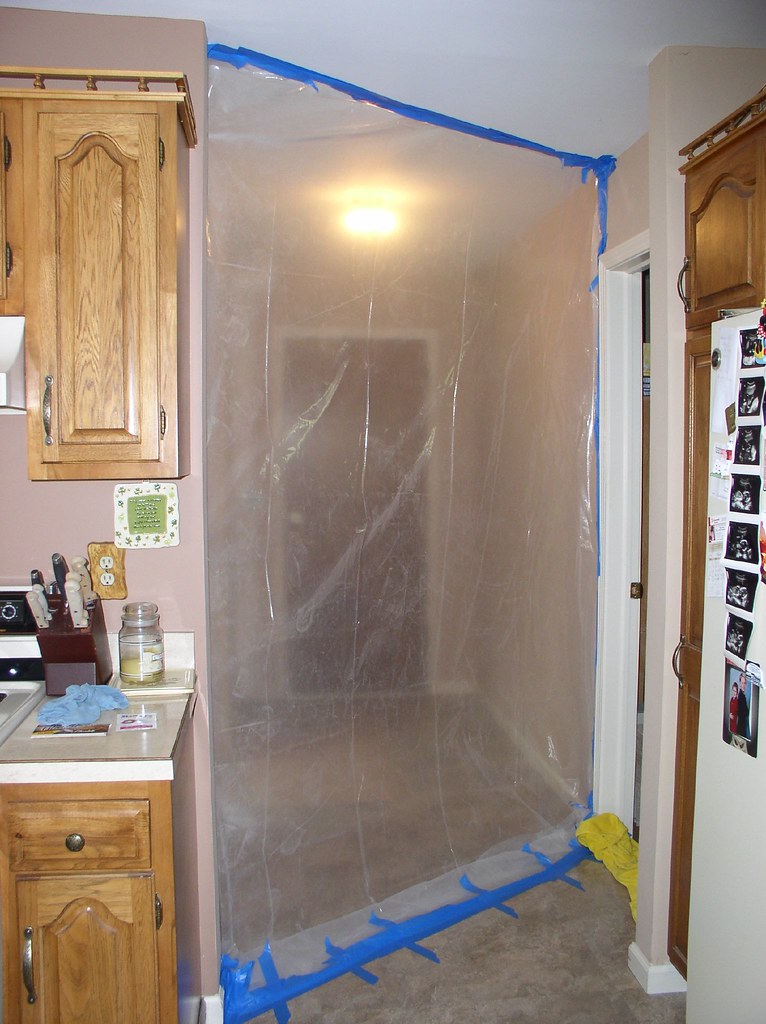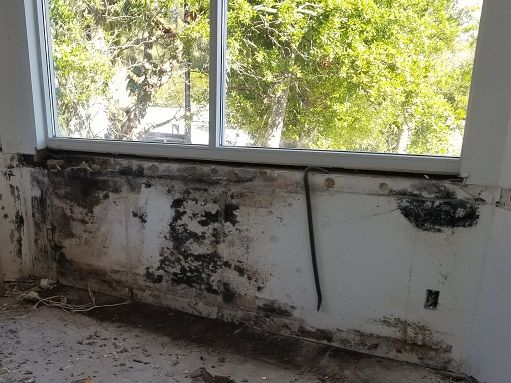Top 11 Essential Mold Facts & Removal Tips For Your Home Or Business
Key Takeaways
- Mold can lead to significant health issues, especially for those with allergies or compromised immune systems.
- The best way to fight mold is by controlling moisture levels in your home or business.
- Identifying mold early is key; it often appears as discolored patches or a musty smell.
- For small mold problems, you can clean using household products, but always wear protective gear.
- When mold infestation is large or if you’re unsure, it’s safer and more effective to call in professionals.
Mold. It’s that unwelcome visitor that shows up unannounced, takes up residence in the nooks and crannies of your home, and refuses to leave without a fight. But mold is more than just an unsightly nuisance; it’s a potential health hazard that can wreak havoc in your living or working space. So, let’s roll up our sleeves and dive into the world of mold – understanding what it is, why it’s harmful, and most importantly, how to kick it to the curb.
First things first, mold is a type of fungus that thrives in moist environments. It reproduces by releasing tiny spores into the air, which can then land and grow on surfaces. These spores are always floating around us, but they only become a problem when they find a damp spot to settle.
Discovering Mold: What You Need to Know
When you’re on a mold hunt, use your eyes and nose. You’re looking for discolored patches that range from white and orange to green and black. Sometimes, it’s hidden behind wallpaper, tiles, or paneling. If it’s not visible, a musty, earthy smell can be a dead giveaway. Stay alert for any signs, because early detection is half the battle.
Defining Mold and Its Common Types
There are thousands of mold species, but in homes and businesses, a few usual suspects like to cause trouble. Aspergillus is common on food and in air conditioning systems, Cladosporium loves both cool and warm areas like carpets and curtains, and Stachybotrys, also known as ‘black mold’, is particularly nasty and grows on water-damaged materials.

Identifying Signs of Mold in Your Space
Spotting mold can be tricky. Look out for irregular stains on walls, ceilings, and floors, especially in damp areas like bathrooms and basements. Peeling wallpaper or condensation on windows can also signal a mold-friendly environment. And remember, mold loves to hide, so check under sinks, in closets, and around window sills.
Health Risks: Why Mold Can’t Stay
Mold is not just about aesthetics; it’s a health hazard. When mold spores get into the air, they can trigger allergies, cause respiratory issues, and even lead to chronic health problems. The very young, the elderly, and those with existing health issues are particularly vulnerable.
Understanding Mold-Related Health Concerns
Exposure to mold can lead to symptoms like sneezing, coughing, watery eyes, and skin irritation. For asthma sufferers, it can cause more frequent and severe attacks. Long-term exposure can even affect the immune system. That’s why taking mold seriously and considering immediate mold remediation is crucial for maintaining a healthy environment.
Most importantly, it’s not just about the type of mold, but the duration of exposure and the condition of your health. Even non-toxic mold types can cause problems if you’re exposed to them for too long or you’re particularly sensitive.
Who Is Most at Risk?
While mold can affect anyone, certain groups are more at risk. Infants and children, the elderly, individuals with respiratory conditions like asthma or chronic obstructive pulmonary disease (COPD), and those with compromised immune systems should steer clear of moldy environments. If you fall into any of these categories, it’s even more important to prevent and address mold issues promptly.
Ensuring Adequate Ventilation
One of the simplest ways to deter mold growth is by keeping the air moving. Use fans, open windows, and exhaust systems, especially in high-humidity areas like the kitchen and bathroom. Ventilation is key because it helps to keep surfaces dry and reduces the moisture that mold spores need to take root and spread.
Addressing Leaks and Water Issues Promptly
Got a leak? Fix it now! Water is mold’s best friend, and even a small drip can create a mold haven. Regularly check for leaks under sinks, around toilets, and near any pipes. If you’ve had a flood or spill, dry the area within 24 to 48 hours to prevent mold from getting cozy. Remember, the faster you act, the less time mold has to grow.
DIY Mold Battle: Removal Tips and Tricks
When you’re facing a small mold problem, you can often handle it yourself. But before you start, make sure the area is well-ventilated and you’re equipped with gloves, goggles, and a mask. This isn’t just about cleanliness; it’s about your health.
Here’s a step-by-step guide to tackle that pesky mold:
- First, gear up with protective wear.
- Then, if the mold is on a hard surface, scrub it with soapy water and let it dry completely.
- For tougher jobs, you can use a mixture of one cup of bleach to one gallon of water. Never mix bleach with ammonia or other cleaners.
- Apply the cleaning solution with a sponge or brush and let it sit for at least 10 minutes.
- Rinse the area thoroughly and dry it as fast as possible.
Remember, porous materials like ceiling tiles or carpet may need to be thrown out if they become moldy. For more detailed guidance, consider reading about immediate mold remediation techniques.
Safe Mold Cleaning Solutions
You don’t always need harsh chemicals to clean mold. For a natural approach, white vinegar or baking soda can be effective against smaller mold spots. Simply apply, scrub, and wipe away. These solutions are safer for kids and pets and are kind to the environment.
Protective Gear and Safety Precautions
Never underestimate mold. It can irritate your eyes, skin, and lungs, so suit up with gloves, goggles, and an N-95 respirator. Keep the room ventilated, and if you’re dealing with a lot of mold or if you have health concerns, get someone else to do the dirty work.
When and How to Use Bleach
Bleach can be a mold assassin, but it’s not always necessary. It’s most effective on non-porous surfaces like tiles or sinks. Always dilute it, never mix it with other chemicals, and use it in a well-ventilated area. But remember, bleach doesn’t prevent mold from returning; it just knocks it out for the moment.

Knowing When to Call the Pros
If the moldy area is larger than about 10 square feet, or if you suspect the ventilation system is contaminated, it’s time to call in the cavalry. Professionals have the tools and expertise to safely and effectively remove large-scale mold infestations.
Assessing the Severity of Mold Infestation
Take a good look at your mold situation. If it’s widespread, if there’s water damage you can’t control, or if the air quality in the room has declined, these are all signs that you need professional help. It’s not just about cleaning; it’s about ensuring the mold doesn’t return and that your space is safe.
Professionals can also help identify the root cause of the mold, which is essential for long-term control. They can suggest improvements to your space to prevent future mold growth, like better insulation or additional ventilation.
The Benefits of Professional Mold Assessment and Remediation
Professional mold removal isn’t just about scrubbing away what you can see. Experts will assess your space, test the air quality, and create a plan to remove the mold safely. They’ll also take steps to protect the rest of your home or business from spores that might try to escape the cleanup.
Plus, they can offer advice on how to prevent mold from coming back, which might include recommendations for dehumidifiers, fans, or other equipment to keep your space dry and mold-free.
Finding Qualified Mold Removal Services
When looking for mold removal services, search for certified professionals who have experience with mold remediation. Check reviews, ask for references, and make sure they follow the Environmental Protection Agency (EPA) guidelines. A trustworthy service will offer a detailed plan and a clear explanation of the work they’ll perform.
And don’t be shy about asking questions. A good service provider will be happy to explain their process and how they’ll keep you and your property safe during mold removal.
Post-Removal: Keeping Mold at Bay
After the mold is gone, the battle isn’t over. You need to stay vigilant to keep it from coming back. Regular cleaning, especially in areas prone to moisture, can prevent mold spores from settling down again. Check for leaks frequently, use dehumidifiers as needed, and keep your space well-ventilated.
Most importantly, address any water issues immediately. Whether it’s a leaky faucet or a damp basement, moisture control is your number one defense against mold. Keep an eye on humidity levels, too; they should be kept below 60 percent.
With these strategies, you can maintain a healthier, mold-free environment. Remember, mold is persistent, but with the right knowledge and tools, you can protect your home or business from its unwelcome presence.
Regular Cleaning to Prevent Mold Recurrence
After you’ve tackled mold, your job isn’t done. Regular cleaning is your best defense against a mold comeback. Pay special attention to bathrooms, kitchens, and other high-moisture areas. Wipe down surfaces regularly and don’t let water accumulate. Use mold-resistant products like shower curtains and paint to give yourself an extra edge in the fight against mold.
Remember, it’s not just about cleaning the areas where mold was previously found. It’s about maintaining a clean environment throughout your home or business. Vacuum carpets often, use a dehumidifier if necessary, and keep indoor plants under control, as they can harbor mold in the soil.
Ongoing Monitoring for Dampness and Humidity
Consistently monitoring the humidity levels in your home or business can prevent the conditions that allow mold to flourish. Invest in a hygrometer to keep an eye on the moisture in the air. The ideal indoor humidity level is between 30% and 50%. If you’re above this range, consider using dehumidifiers or air conditioners to bring it down.
Check for condensation on windows, pipes, and walls as a sign of high humidity. Address it quickly to prevent mold’s return. Also, make sure your ventilation systems, such as bathroom fans and kitchen hoods, are working properly to remove excess moisture.

FAQ
Let’s clear up some common questions and misconceptions about mold to help you stay informed and ready to act. For a more detailed guide, check out mold remediation in Tampa.
Can Mold Go Away on Its Own?
No, mold does not go away on its own. If left untreated, it will continue to grow and spread. Mold needs moisture to survive, so without addressing the underlying cause of the moisture, the mold will persist.
How Can I Tell if It’s Mold or Just Dirt?
Mold often appears as a patch or area with irregular growth patterns and can be various colors like black, green, or white. It may also have a musty smell. Dirt, on the other hand, does not have a distinct smell and is usually more uniform in appearance. If you’re unsure, it’s best to consult a professional.
Are Home Mold Testing Kits Reliable?
Home mold testing kits can give you an indication of mold presence, but they are not as reliable as professional testing. They can sometimes give false positives or negatives. For accurate identification and remediation, it’s best to hire a professional.
Does Painting Over Mold Kill It?
Painting over mold does not kill it. The mold may continue to grow underneath the paint, leading to further problems. It’s essential to clean and remove the mold before painting. Some paints are mold-resistant and can help prevent mold growth, but they do not kill existing mold.
What Is the Difference Between Mildew and Mold?
Mildew is a type of mold that tends to grow flat and remains on the surface, making it easier to remove. It often appears as a powdery or fluffy white or gray patch. Mold is usually black or green and penetrates the surface of the material it’s growing on, making it harder to eliminate.
Understanding the enemy is the first step to winning the war. Mold may be a formidable opponent, but with the right knowledge and tools, you can maintain a mold-free environment. Stay vigilant, act quickly when you spot it, and don’t hesitate to call in the experts when needed. Your home or business deserves to be a healthy, mold-free space!
